Decay of the USSR, 1991: Chronicle of Events
The collapse of the USSR of 1991 was the result of the system of systemic disintegration (destruction) of the social and political sphere, social structure and national economy. As a state, he officially ceased to exist on the basis of a contract signed on December 8 leaders of Russia, Ukraine and Belarus, but the previous events began in January. We will try to restore them in chronological order.
Start the end of the Great Empire
The first link in the chain of events that generated the 1991 political crisis and the collapse of the USSR were the events started in Lithuania after MS Gorbachev, who was then the President of the Soviet Union, demanded that the Soviet Constitution had previously suspended on its territory. His appeal, directed on January 10, was supported by the introduction of an additional contingent of internal troops that blocked a number of essential public centers in Vilnius.
Three days later, a statement of the Committee of National Rescue was published in Lithuania, in which his members expressed support for the action of the Republican authorities. In response to this on the night of January 14, Vilnius television vehicle was busy divisions of landing troops.
First blood
The special severity of the event accepted on December 20, after the riot police arrived from Moscow began to capture the buildings of the Ministry of Internal Affairs of Lithuania, and as a result of a shootout, four people died and about ten were injured. This first shed in Vilnius streets blood served as a detonator of the social explosion, the result of which was the collapse of the USSR of 1991.
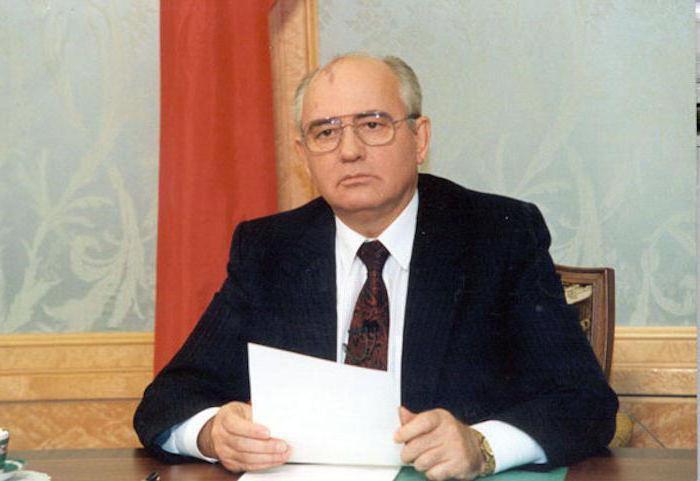
The actions of the central authorities who tried to restore control over the Baltic, led to the most negative consequences for them. Gorbachev became the object of acute criticism from representatives of both the Russian and regional democratic opposition. Expressing the protest against the use of military force against civilians, E. Primakov, L. Abalkin, A. Yakovlev and a number of other former Councils Gorbachev were resigned.
The response of the Lithuanian government to the actions of Moscow was a referendum on the exit of the republic from the USSR, held on February 9, during which, over 90% of its participants spoke for independence. This can be called the beginning of the process with a complete reason, as a result of which the USSR declared in 1991.
Attempt to reanimate the Union Treaty and Triumph B.N. Yeltsin
The next stage in the overall series of events was a referendum conducted in the country on March 17 of the same year. On it, 76% of USSR citizens spoke for the preservation of the Union in an updated form, and the introduction of the post of President of Russia. In this regard, in April 1991, the negotiations of the republics who were part of the USSR, on the conclusion of the new Union Treaty, began in the presidential residence of Novo-Ogarevo. Chaired by M.S. Gorbachev.
In accordance with the results of the referendum, the first victory in the history of Russia was conducted on which B.N. Yeltsin, confidently ahead of the remaining candidates, among which there were such well-known politicians like V.V. Zhirinovsky, N.I. Ryzhkov, A.M. Tuleyev, V.V. Bakatin and general A.M. Makashov.
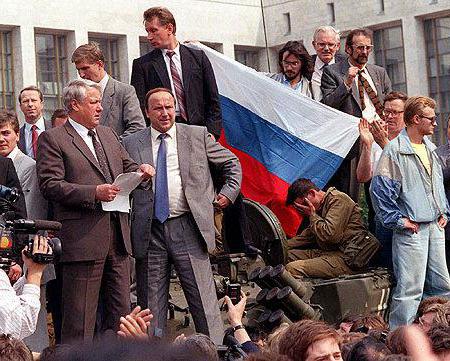
Search for compromise
In 1991, the collapse of the USSR was preceded by a very complex and long process of redistributing the authorities between the Union Center and its republican branches. The need was due to the institution in Russia of the presidential post and the election of B.N. Yeltsin.
This greatly complicated the preparation of a new Union Treaty, whose signing was scheduled for August 22. It was known in advance that a compromise option is preparing, providing for the transfer of a wide range of powers to individual constituent entities, and leaving the decision of only the most important issues, such as defense, internal affairs, finances, and a number of others.
Main initiators of the creation of GCCP
Under these conditions, the collapse of the USSR is significantly accelerated by the August 1991 events. In the history of the country, they were included as the PUTCHE GKCP (State Committee for Emergency Regulations), or a failed attempt to make a coup. Its initiators were politicians who previously engaged in high state posts, and extremely interested in preserving the former regime. Among them were G.I. Yanaev, B.K. Pugo, D.T. Yazov, V.A. Crochets and a number of others. Their photo is shown below. The Committee was established by them in the absence of President of the USSR - M.S. Gorbachev, who was at that time at the government dacha "Foros" in the Crimea.
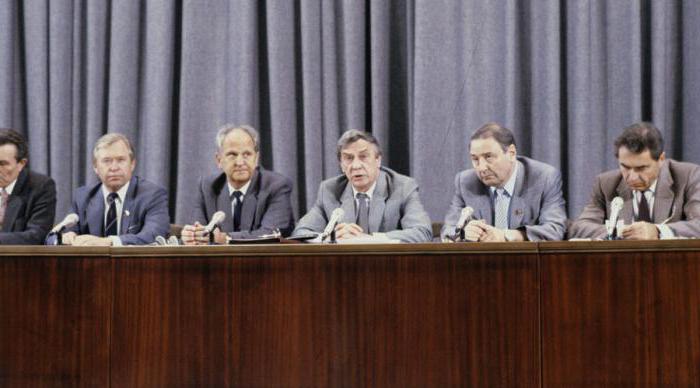
Emergency measures
Immediately after the establishment of the GCCP, it was announced that by members of a number of emergency measures, such as the introduction of a significant part of the country of emergency and the abolition of all newly formed power structures, the creation of which was not provided for by the USSR Constitution. In addition, the activities of opposition parties were prohibited, as well as conducting demonstrations and rallies. In addition, economic reforms prepayed in the country were announced.
The August 1991 coupling and the collapse of the USSR began with the disposal of the GCCP on the introduction of troops into the largest cities of the country, among which were Moscow. This extreme, and, as practice has shown, a very unreasonable measure, was undertaken by members of the Committee to intimidate the people and give them a larger statement. However, they achieved just the opposite result.
Inglorious end of the couch
Capturing the initiative to his own hands, the opposition representatives organized in a number of cities of the country of many thousands of rallies. In Moscow, their participants have become more than half a million people. In addition, the enemies of the GCCP managed to incline commanding the Moscow garrison and thereby depriving the ticks of their main support.
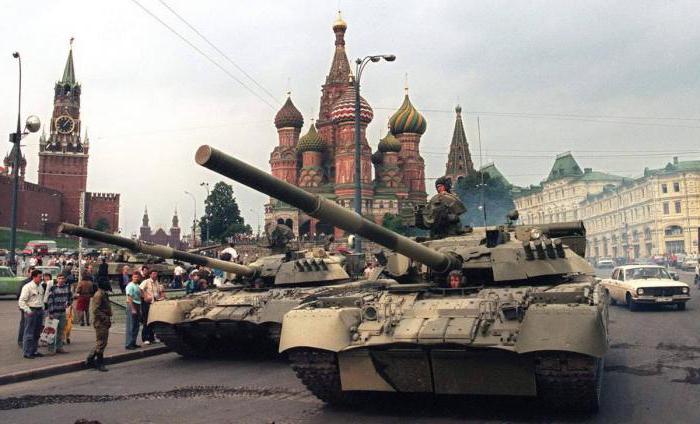
The next stage of the coupling and collapse of the USSR (1991) was the trip of members of the GCCP in the Crimea, undertaken by them on August 21. Having lost the last hope to take control of the opposition's action, led by B.N. Yeltsin, they went to Foros for negotiations with M.S. Gorbachev, who, at their disposal, was isolated from the outside world and was actually on the position of the hostage. However, the next day, all the organizers of the coup were arrested and delivered to the capital. Following them to Moscow returned and M.S. Gorbachev.
Recent efforts to save the Union
So prevented the 1991 state coup. The collapse of the USSR was inevitable, but attempts were made to maintain at least part of the previous empire. To this end, M.S. Gorbachev, when drafting a draft of the new Union Treaty, went on significant and not previously provided concessions in favor of the Union republics, holding their governments even greater powers.
In addition, he was forced to officially recognize the independence of the Baltic States than actually launched the displacement mechanism of the USSR. In 1991, Gorbachev also made an attempt to form a qualitatively new democratic union government. Popular democrats were invited to his composition, such as V.V. Bakatin, E.A. Shevardnadze and their supporters.
Conscious that under the current political situation, it is impossible to preserve the previous structure of the state, in September, the preparation of the Treaty on the establishment of a new Confederate Union was launched, which should be included in the rights of independent subjects. However, the work on this document was not destined to be completed. On December 1, a nationwide referendum was held in Ukraine, and on the basis of its results, the republic came out of the USSR, which crossed the plans of Moscow to create a confederation.
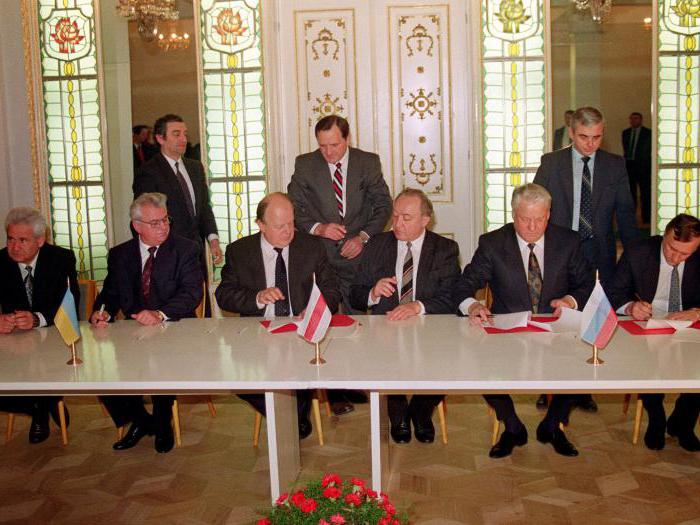
Belovezhskaya Agreement, which started the creation of the CIS
The final collapse of the USSR occurred in 1991. His legal justification was a contract concluded on December 8 at the Government Hunting Dacha "Viskuli", located in Belovezhskaya Pushcha, from which he received its name. Based on the document signed by the heads of Belarus (S. Shushkevich), Russia (B. Yeltsin) and Ukraine (L. Kravchuk), the Commonwealth of Independent States (CIS) was formed, which listed the existence of the USSR. The photo is given above.
Following the agreement concluded between Russia, Ukraine and Belarus, another eight republics of the former Soviet Union were joined. The document was given their signatures of the head of Armenia, Azerbaijan, Kyrgyzstan, Kazakhstan, Tajikistan, Moldova, Uzbekistan and Turkmenistan.
The leaders of the Baltic republics with approval met the news about the collapse of the USSR, but they abstained from joining the CIS. Georgia, at the head of which stood Z. Gamsakhurdia, followed by their example, but soon after, as a result of the state coup in it, E.A. Shevardnadze, also entered the new formation Commonwealth.
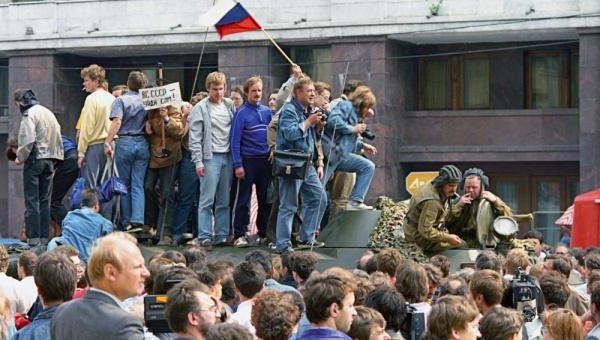
President who remains not
The conclusion of the Belovezhsky Agreement caused an extremely negative reaction from M.S. Gorbachev, who served until the post of President of the USSR, but after the August coup deprived of real power. Nevertheless, historians note that there are a significant proportion of his personal guilt in the events. No wonder B.N. Yeltsin said in one of the interviews that the agreement signed in Belovezhskaya Pushcha did not destroy the USSR, and only stated this long ago.
Since the Soviet Union ceased to exist, the post of his president was also abolished. In this regard, on December 25, the remaining not at the affairs of Mikhail Sergeevich filed a resignation with a high post held. They say that when he appeared in the Kremlin in two days later, the new President of Russia - B.N. Yeltsin. I had to accept. Time was inexorably moving forward, opening the next stage in the life of the country and making the history of the collapse of the USSR of 1991, briefly described in this article.
